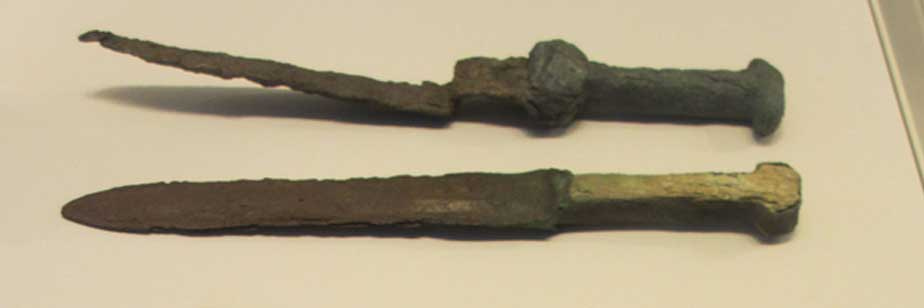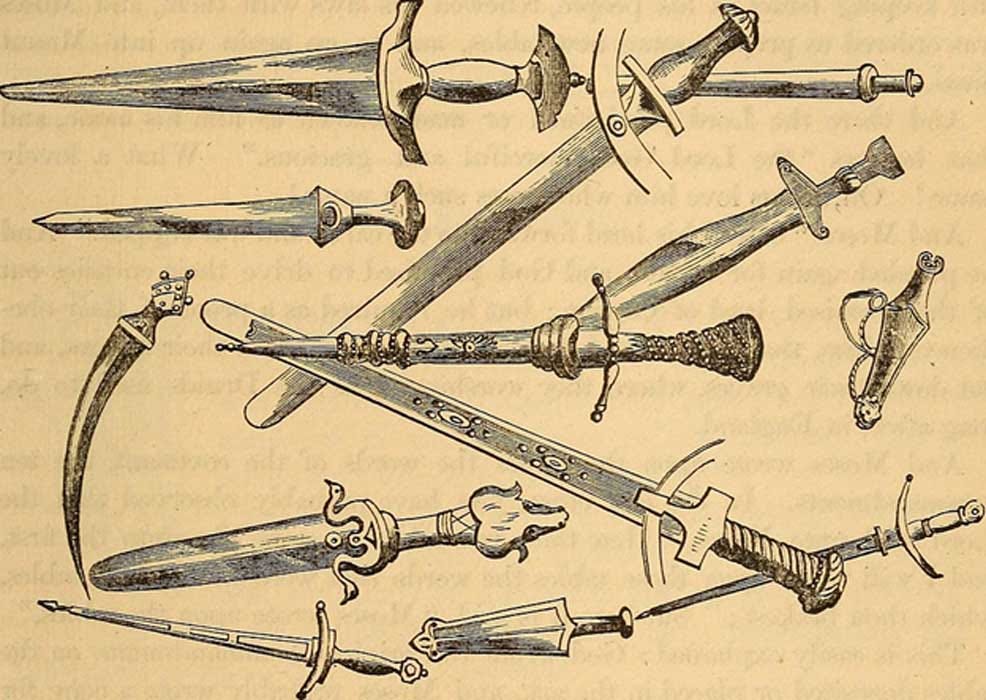While the Israelites saw Yahweh in the spiritual sense as their divinely armed warrior leading the way, in the physical realm, they were anything but divinely armed. At Sinai, Moses instituted a draft in which the number swelled from 1,000 soldiers to 5,500 or 5,750. These 5,500 Israelites were trained and armed, most likely in Egyptian fashion. As time progressed the Israelites adopted new forms of strategy, tactics, arms, and armor due to the trial and error of battle.
All weapons serve a defensive and offensive purpose, depending on whether the warrior is repelling or attacking an opponent. One way to examine the Israelite weapons is from a perspective of short, medium, and long-range use.

The Khopesh vs the Sickle Sword
The sword the Israelites were familiar with, was the Egyptian bronze sword called a khopesh, or the ‘foreleg’ of an animal. The khopesh was an amalgamation of a sword and an axe. The shape of the blade is straight until it reaches the last half, where it sweeps out into a curved cutting edge. The entire sword from handle to blade was cast from one piece of bronze. The length was 500 to 650 millimeters, (19 - 25 inches) and the weight was 650 to 750 grams (1.4 - 1.6 pounds). The outside edge of the sword was sharpened, not the inside edge. The handle of the sword was likely made of wood, bone, or ivory. The design and function of the weapon allowed the soldier to hook his opponents arm; pull his shield out of the way; or hook a horse’s leg, causing the animal to throw its rider and exposing the rider to the lethal downward slash.
Keep reading with a 7-day free trial
Subscribe to Ancient Origins UNLEASHED to keep reading this post and get 7 days of free access to the full post archives.

